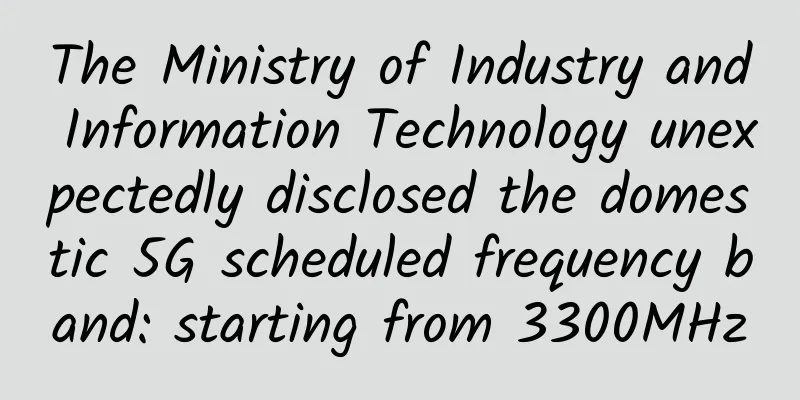The Ministry of Industry and Information Technology unexpectedly disclosed the domestic 5G scheduled frequency band: starting from 3300MHz

|
Huawei's Kirin 970 chip pioneered the 1.2Gbps commercial LTE baseband for the first time, entering the 4.5G era of Pre 5G. According to the plan of international organizations, 5G will be rolled out as early as the Pyeongchang Winter Olympics next year, and the 2020 Tokyo Olympics will show a mature global posture. However, 5G also requires a dedicated frequency band, that is, radio frequency. The "Radio Frequency Division Regulations (Revised Draft for Comments)" recently drafted and published by the Ministry of Industry and Information Technology has released a new signal for 5G. The part of the draft opinion concerning the "International Mobile Telecommunications (IMT) system" is as follows:
Mobile services in the CHN34 3300-3400MHz frequency band are intended for use in the International Mobile Telecommunications (IMT) system and are limited to indoor use in principle. CHN35 Mobile services in the 4400-4500MHz frequency band can be used for the International Mobile Telecommunications (IMT) system. The IMT system shall not cause harmful interference to the aeronautical radio navigation service in the 4200-4400MHz frequency band, and the IMT system cannot be put into use before the relevant compatible coexistence conditions are determined. Mobile services in the CHN37 4800-5000MHz frequency band are used for international mobile communications (IMT). The specific frequency allocation and use should take into account the usage needs of relevant departments. The author believes that 3300-3400MHz, 4800-5000MHz, and 4400-4500MHz can be understood as being basically determined as dedicated frequency bands for 5G. |
Recommend
Cloud, network and security integration builds the foundation for digital transformation
On September 27, the 2021 China International Inf...
iWebFusion: $99/month - Dual E5-2670/128G memory/500G SSD hard drive/20TB monthly traffic, multiple data centers in Los Angeles and other places
iWebFusion (iWFHosting) is a site under the forei...
What exactly is BRAS?
Students who are good at English may be a little ...
Liu Yulin from the Ministry of Industry and Information Technology: Gigabit optical network is the supporting base of new infrastructure
On March 29, at the "Gigabit Optical Network...
Everyone says China is strong in 5G, but what makes it so strong? Why is it so strong?
Liu Xingliang (hereinafter referred to as "L...
Ten techniques for API protocol design
In this digital age, our daily lives are filled w...
How to choose the correct branch jumper for the switch
This article will serve as a guide for using MTP ...
5G commercial use please wait for low-consumption users
In recent days, major operators' apps have pl...
Approaches to Solving Multiradio Hardware Design Challenges
The combination of multi-radio and multi-protocol...
Ministry of Industry and Information Technology: my country has built nearly 850,000 5G base stations
According to the Ministry of Industry and Informa...
V5.NET: Hong Kong CN2 (HKTW-B3) limited 30% off, dual E5-2630L/32GB/1T SSD/10M CN2 monthly payment 625 yuan
V5.NET has announced a special event this month, ...
5G manufacturing involves much more than just 5G
[[435113]] Mobile edge computing, artificial inte...
The key to managing "big data killing old customers" is to prescribe the right medicine
[[343477]] To manage the phenomenon of "big ...
5G brings devastating impact, ten physical industries will disappear in 22 years
5G has brought a devastating impact, and ten more...
A brief history of the imported term “404 error”: “The page you are looking for does not exist”
Editor's note: "404 error" is a web...

![[11.11] iONcloud: $11.1/month - dual core/2G memory/60G SSD/3TB@1Gbps, Los Angeles/San Jose/Honolulu/Singapore data center](/upload/images/67cabd0d02701.webp)



![[Black Friday] Summary: Yunding Internet/Megahertz Cloud/Fluorescent Cloud/Journey Cloud](/upload/images/67cac22bb5d03.webp)



